Glencairn Abbey
Houses within 5km of this house
Displaying 24 houses.
Houses within 5km of Glencairn Abbey
Displaying 24 houses.
| House name | Description | |
|---|---|---|
| Marshtown/Marston | Home of Richard Henry Gumbleton in the early 19th century and at the time of Griffith's Valuation when the buildings were valued at £12. 10 shillings. Advertised for sale in June 1854. Hajba writes that the Orpens built a much large house on the demesne in the 1860s which was burnt some time later. In 1906 Basil Orpin occupied a house valued at £55 at Marshtown. Buildings still exist at this site. An earlier Marshtown House, previous home of the Gumbletons, was located over the border in county Waterford. | |
| Belvidere | This house was unoccupied in 1814. Mrs Maria Peard was the occupier in the mid 19th century holding the property from Henry Peard, it was valued at £15.12 shillings. Hajba writes that the Peards sold the estate to the Pope family who occupied the house until the early 20th century. |
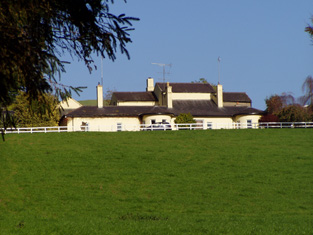
|
| Lismore Castle | The castle belonged to Sir Walter Raleigh who sold the property to Sir Richard Boyle in 1602. Charlotte Elizabeth Boyle, the daughter and heiress of the 4th Earl of Cork, married William Spencer Cavendish, 4th Duke of Devonshire and when she died in 1754 the estate passed to the Cavendish family. At the time of Griffith's Valuation, the castle was valued at £140. The 1943 ITA survey contains an extensive description of the castle and its grounds at that time. It has remained in the hands of the Cavendish (Devonshire) estate, housing a prestigous art gallery. See www.lismorecastle.com. |

|
| Ballymartin House | Francis Campion, MD, was leasing this property from the Cavendish estate in 1851 when it was valued at £16. It is present but not named on the 1st edition Ordnance Survey Map but is named Ballymartin House on the later 25-inch map. Brady indicates that the present house is of early nineteenth century date. It is still extant and occupied. |

|
| Ballinanchor House | Ballinanchor was owned by Thomas Foley in 1851 when it was vacant and valued at £12. In 1814, Leet refers to it as the residence of Captain Thomas Poole. A house and farm still exist at the site. | |
| Ballygally House | Ballygally House was the property of Nelson T. Foley in 1851 when it was vacant and valued at £27 10s. In 1837 Lewis refers to it as "the occasional residence of G. Holmes Jackson". It is still extant and occupied. |

|
| Ballyin House | In 1851 Ballyin House was held in fee by the Devonshire estate when it was valued at £22. Lewis refers to it as the residence of P. Foley in 1837. Smith refers to Ballyin as the seat of Richard Musgrave. The house is still extant and occupied. |

|
| Ballyin Flour Mill | In 1851, Nelson T. Foley was leasing this property, including a substantial flour mill. from the Devonshire estate when it was valued at £110. The mill building is now derelict. |

|
| Flowerhill House (Waterford) | Flowerhill was leased by Nelson T. Foley to Barry Drew in 1851. Lewis also refers to it as the seat of B. Drew, describing it as " a beautiful residence in the cottage style". The house is no longer extant. | |
| Toortane House | In 1851 Thomas Foley was leasing this property from the Devonshire estate when it was valued at £33 10s. Lewis refers to it as his seat in 1837. It is still extant and occupied, having been restored. |

|
| Ashbourne House | In 1851 Edmond Foley was leasing this property from the Devonshire estate when it was valued at £21 10s. It is labelled Ashbourne House on the later 25-inch Ordnance Survey Map. | |
| Elgin Cottage | In 1851 this property was leased by Georgiana Gumbleton to Edmund Barry when it was valued at £10. It was built after the 1st edition Ordnance map and is labelled Elgin Cottage on the 25-inch edition of the 1890s. There is still an extant house at the site. | |
| Marshtown House | Held in fee by R.H. Gumbleton at the time of Griffith's Valuation, when it was valued at £8 10s. The property is labelled Marshtown House on the 1st editon Ordnance Map but is not labelled on the later 25-inch edition. Marston House (W950987), in the adjacent townland of Marshtown, is shown on the 25-inch map of the 1890s but there is no trace remaining. | |
| Cloonbeg | A property described as offices, the property of R.H. Gumbleton, was valued at £15 5s at the time of Griffith's Valuation. In 1906 this property was owned by Basil Orpin with a valuation of £16. Some of the buildings still remain at the site. | |
| Fortwilliam House (Waterford) | In 1851 J.B. Gumbleton held this property in fee when it was valued at £47 10s. Lewis also refers to it as his seat in 1837 when he describes it as " a handsome demesne with a new house being erected". The ITA survey noted it as the residence of Mr. P. Dunne in 1942. Fortwilliam is still extant and occupied. In 2024 it was offered for sale. |
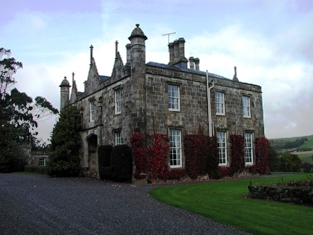
|
| Ballyduff Castle Farm | Described as Ballyduff Castle (in ruins) on the 1st edition Ordnance Survey map, these buildings were valued at £11 15s at the time of Griffith's Valuation. They were being leased by Edward Walsh from the Musgrave estate. The National Inventory of Architectural Heritage suggests the house was built c.1825. The ruined fortified house at the site dates from the early seventeenth century. |
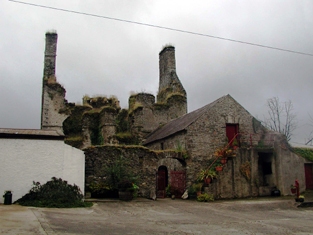
|
| Glenmore House (Lismore) | At the time of Griffith's Valuation, Thomas Boyce was leasing this property to Richard Cliffe, when it was valued at £24. A very substantial farmyard is labelled at this site on the 1st edition Ordnance Survey Map. It is labelled Glenmore House on the later 25-inch edition. It is still extant and occupied. |
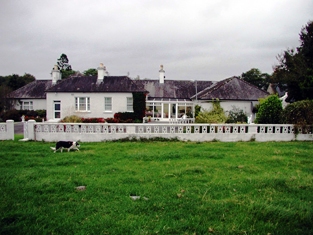
|
| Ballysaggartmore House | Held in fee by Arthur Ussher at the time of Griffith's Valuation, when it was valued at £68. Lewis refers to it as the seat of A Keily in 1837 when he describes the demesne as "ample and tastefully planned". Local sources suggest Arthur Keily-Ussher commenced building a lavish castle in 1850. The extravagent entrance depleted his funds and the castle was never completed. It was later purchased by the Woodruffe family. In 1906 it was the property of Richard Woodroffe and valued at £68. The house was burned in 1922 and demolished in the 1930s. The elaborate towers are still extant and part of the demesne is a Forestry Service amenity area. |
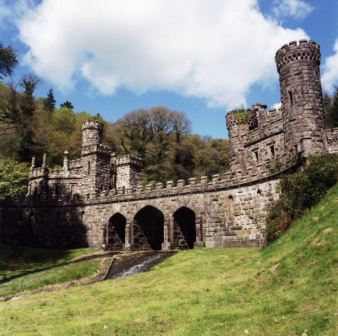
|
| Deerpark (Lismore) | Arthur Ussher held in fee a farmhouse and farmyard at Deerpark, valued at £16 10s, in 1851. Extensive farm buildings still exist at the site. | |
| Lisfinny House | Major Edward Croker was leasing this house from the Devonshire estate in 1851 when it was valued at £23. Lewis also recorded it as his residence in 1837 when he noted that "the ancient castle, built by the Earl of Desmond, has been converted into a handsome residence". It is still extant and occupied. |
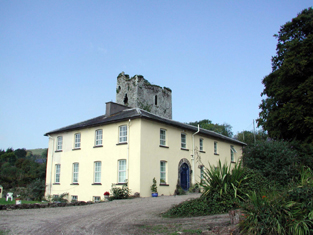
|
| Lismore Villa | Leased by the Devonshire estate to H.K. Hemming at the time of Griffith's Valuation, when it was valued at £30. It is still extant. |

|
| Lismore Townparks West | In 1851 William Baldwin was leasing this property from the Devonshire estate when it was valued at £11. | |
| Castle Farm | IN 1851 the farmhouse at Castlelands was held in fee by the Devonshire estate and valued at £27. The farm house is still extant and occupied. A large farmyard complex was located at X035986. In 1906 the buildings at this location had a valuation of £15 10s. |

|
| Glenbeg House (Lismore) | In 1851 Glenbeg House was owned by Thomas Foley but was vacant. It was valued at £23 10s at that time. In 1837 Lewis refers to it as the seat of G. Bennett Jackson. The original house dates from the mid-sveenteenth century though it was renovated in the nineteenth and twentieth centuries. Smith, writing in 1774, refers to it as the seat of Mr. John Jackson. Sadleir, referring to Rowland Jackson in 1775, notes that he was "of Glanbeg". Brady notes that the Jacksons were employed by the first Earl of Cork in the early seventeenth century. Described as "an ordinary farmhouse" in the ITA Survey in 1942. It is still extant and occupied. |

|

